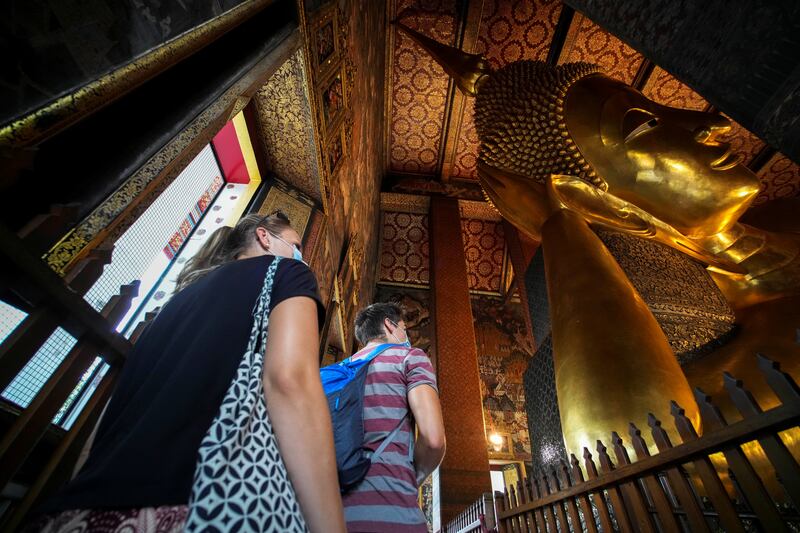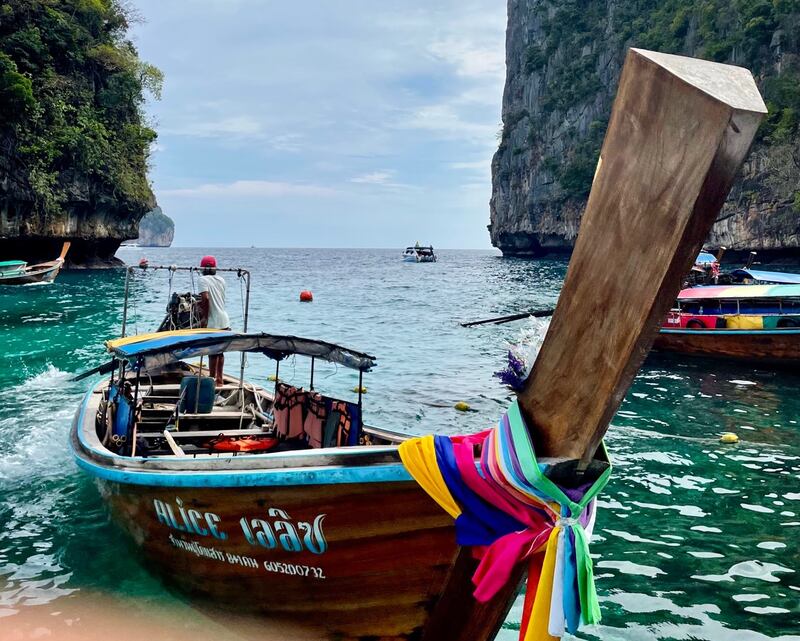The absence of Chinese visitors is slowing the recovery of Thailand’s tourism sector after it was pummeled by the COVID-19 pandemic, say tour operators and hoteliers.
Beijing continues to discourage its citizens from traveling abroad by imposing stringent travel restrictions, including at least seven days of quarantine upon arrival back home, as part of its zero-COVID policy.
Voramont Chairat owns two four-star resorts in the picturesque town of Pai in northern Thailand’s Mae Hong Son province. Lately, she has been contemplating selling one of them, saying she cannot bear the burden of her debts accrued during the pandemic when she earned nothing.
“Chinese tourists were like heaven for us,” Voramont, 53, told BenarNews. “Eighty percent of our clients were Chinese. I may reconsider selling my resort if Chinese tourists return sooner.”
During the pandemic, Voramont continued to pay for the maintenance of her business even as many resorts in Pai shut down for good.
“Although Thailand has reopened and tourists are returning to Pai, my revenue is less than 20 percent of what it used to be. It just is not enough to pay back my debt,” she told BenarNews.
Voramont started in 2006 with cheap bamboo huts for western backpackers. By 2017, she had two luxury resorts on either side of the Pai River as “Chinese tourists flooded the town.
“When they checked into our hotels, there was no room for other guests. Both resorts were fully booked throughout the year,” Voramont said, noting the guests would spend “a lot of money in the restaurant, ordering every food.”
“Chinese tourists are our hope … because they made the local people wealthier,” she said.
Thailand’s tourism industry is vital for the country’s growth and foreign exchange, and Chinese tourists are vital for the industry. Of nearly 40 million foreign tourists who visited Thailand in 2019, more than a quarter were Chinese, according to government figures.

Niran SaeZue, the owner of Bangkok-based Brightness Tour who has been managing Chinese tour groups for more than 20 years, said Thailand has been a popular destination for the Chinese because it was close and cheap.
Until the pandemic, Niran received about 200 to 300 Chinese visitors daily, mainly going to Phuket and the southern coasts.
“The beach in Phuket, Phang-nga, Samui, Surat Thani, and Krabi used to be overcrowded” he told BenarNews. “Everywhere, it was packed.”
The scenario is not as dismal this year, but the absence of the Chinese visitors means a full rebound has not been possible.
Thailand started reopening to foreigners in November 2021. Since then, more than 7.3 million, including 1.2 million Malaysians and 660,000 Indians, have visited, said Yuthasak Supasorn, the head of the Tourism Authority of Thailand.
Niran said that while his business has resumed, his income is meager. His staff of 20 before the pandemic is down to three.
Niran said he is often on the phone with his agents in China to ask when visitors from the north would start coming again.
“My agents in China tell me there is no sign that the country will allow their people to travel anytime soon, at least not this year,” he said.

Maya’s Bay’s rejuvenation
Meanwhile, Ekawit Pinyotamanotai, a tourism operator in Krabi province, said "the pandemic was good for the natural ecosystem.
“We were going too fast. COVID gave us a much-needed break. It also made us rethink,” he told BenarNews.
Ekawit cited the example of Maya Bay’s cove beach on Phi Le Island in the Andaman Sea.
Known for its pristine waters, white sandy beach, gigantic limestone cliffs and coral reefs, Maya Bay became a victim of its popularity after appearing in the Hollywood film “The Beach.” Thai officials estimate that as many as 8,000 visitors arrived each day in 2018.
The daily influx of hundreds of longtail boats releasing fuel, spewing smoke and dragging anchors through the coral, as well as visitors polluting the water with sunscreen and trash, decimated sea life.
Authorities announced a temporary closure of the bay in mid-2018 to tackle over-tourism and rehabilitate the marine ecosystem. The closure was extended during the global pandemic.
Maya Bay reopened in January, but with new rules. The number of visitors per day has been limited, and all activities, including swimming and snorkeling, have been prohibited, among other things.
Thon Thamrong-Nawasawat, a marine expert and an assistant professor at Kasetsart University, led the closure of the Maya Bay and its restoration program, which was funded by the government and the private sector. He visited Maya Bay earlier this month and was astonished at the results.
“I almost cried. It is such a big project and a huge challenge. It was so amazing to see the marine life, coral bounce back,” Thon told BenarNews. “I saw several blacktip sharks come close to the island. This is what I had hoped for.”
Ekawit, the tourism operator, who was upset by the bay’s sudden closure – without warning – in 2018, is happy with its rejuvenation.
“Maya Bay is the selling point for Krabi province and the Andaman Sea,” he said.
“The controlled number of visitors, not letting them in the water, and keeping the boats away from the bay are very important for sustainable protection.”
